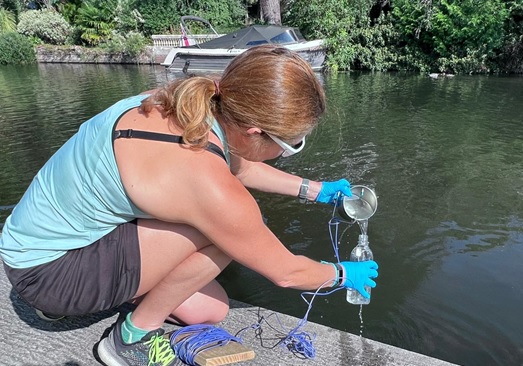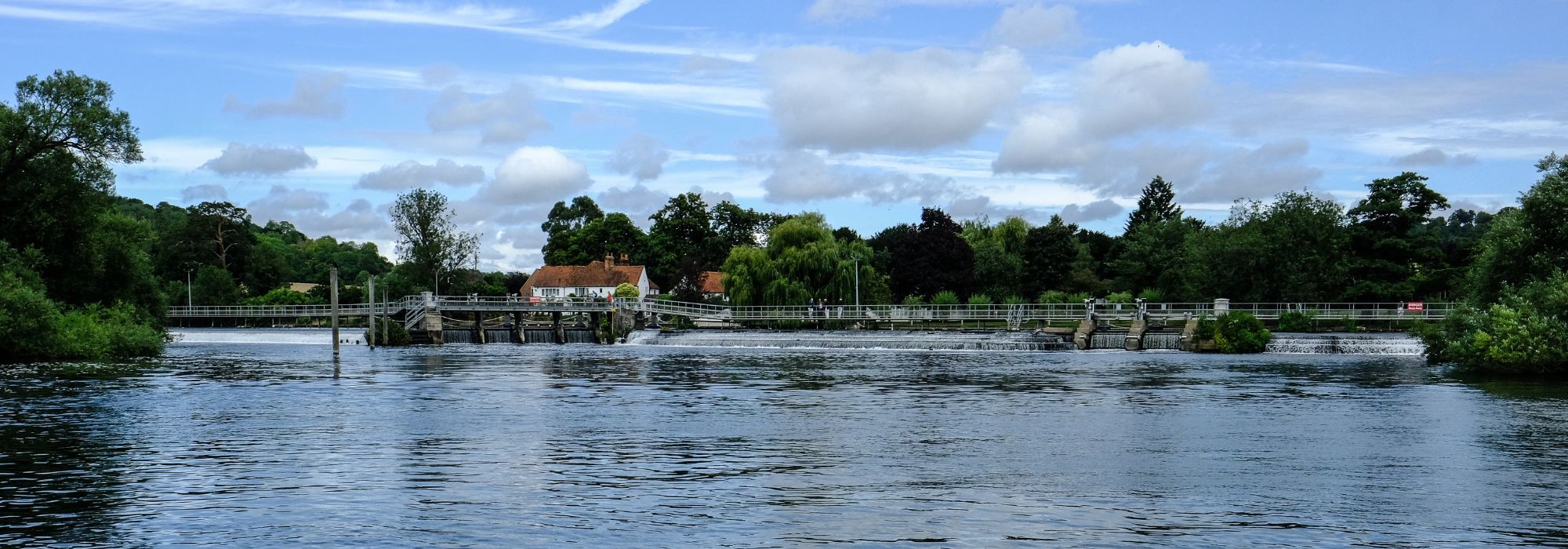River users in Henley-on-Thames exposed to harmful levels of bacteria
Environmental charity Thames21’s Reclaim Our Rivers* project has highlighted concentrations of harmful bacteria up to six times above the recommended standards for safe bathing in Henley-on-Thames, a location famous for its popular swimming and rowing events.
Trained citizen scientists undertook a water quality monitoring programme that involved 20 weeks of sampling at six sites between Henley-on-Thames and Reading, with the principal goal of assessing each site against Bathing Water Regulations. These regulations, used by the Environment Agency, assess the quality of inland bathing waters and monitor for two faecal indicator bacteria: E. coli and Intestinal Enterococci, both of which pose a significant threat to human health. Overall results revealed that of six sites sampled, not one site had bacteria levels considered safe for bathing.

One site at Christchurch Bridge in Reading saw consistently ‘Good’ water quality until the final two weeks of sampling, which brought the overall status down to ‘Poor’.
Meanwhile, further downstream in Henley-on-Thames, all three sites saw more consistently ‘Poor’ results throughout the sampling season. This indicates that sources of pollution are negatively impacting the water quality of the River Thames between these two sites.
Another sampling site on the River Loddon, a tributary that joins the Thames at Wargrave, saw bacteria levels up to 23 times above the recommended standards for safe bathing. The ratios of the two bacteria indicate sewage as the main source of pollution, and recommendations have been made for investigations and asset improvements to be prioritised at Wargrave Sewage Treatment Works, which is just upstream of the sampling site. Local residents, Hilary Chew and Jon Chew, said: “Our children swam in the Loddon 20 years ago – from the look of the water we would not choose to swim in the river now.”

Rachael Wood, a citizen scientist on the project, said: “As a regular year-round river swimmer, I was particularly keen to participate in the Thames 21 ‘Reclaim Our Rivers’ water testing project. Whilst I was aware that Thames Water regularly release sewage into the river, it was rather alarming and extremely disappointing to see that point D; at Loddon Drive Bridge, approximately 5km upstream from Mill Meadows; for which designated bathing status is being applied AND the closest to our local swim spot had the worst results of all 6 areas tested. When assessed for E.coli, results were ‘Poor’ for 19/20 (95%) tests, and ‘Poor’ for Intestinal Enterococci in 12/20 (60%) tests.”
Aggie Hodges, Thames21’s Bathing Water Development Officer, said: “These results have proven a critical need for improvements to be made to reduce the harms of pollution. The River Thames at Henley is a vital space that provides recreation and wellbeing benefits both to the thousands of swimmers who return yearly and to the wider community. Thames21 is calling for further investigations and investments into infrastructure to restore the river to better health, and the Reclaim Our Rivers project will continue to advocate for rivers fit to swim, play, and paddle in.”
Paul Hampton, Healthy Rivers Community Manager at Thames Water, said: “We’re pleased to have been able to support Thames21 and Citizen Scientists with laboratory support to process the river samples.
“There are multiple causes impacting the health of rivers. Pollutants, animal faeces from livestock and wildlife, along with run off from farms and roads can contribute to hazards found in watercourses. This is why we support the government’s approach on bathing water status.
“We hope the learning from studies that we’re undertaking to better understand the water quality at Wolvercote Mill Stream in Oxford will better inform our knowledge at other locations being considered for bathing water designation.
“As part of our current investment programme, we have plans in place to upgrade over 250 of our sewage treatment works and sewers. This includes schemes at Reading, Wargrave and Henley sewage treatment works.”
Notes for the editors
- The Reclaim Our Rivers project is a campaign for more inland bathing waters across the Thames Basin.
- Thames21 worked with its partners to help Wolvercote Mill Stream, north of Port Meadow, Oxford achieve Bathing Water Status. It became the second stretch of river in the UK to achieve Designated Bathing Water Status in April 2022. Read more here: https://storymaps.arcgis.com/collections/4bb4dcb61b36411686e82362987c42bf?item=4
- Click link here to read water quality report: Mill Meadows, Henley-on-Thames Water Quality Report 2023
*The Reclaim Our Rivers Project is kindly funded by Garfield Weston Foundation and The Fishmongers’ Company, with sampling services provided by Thames Water.
